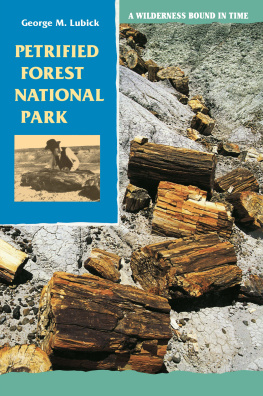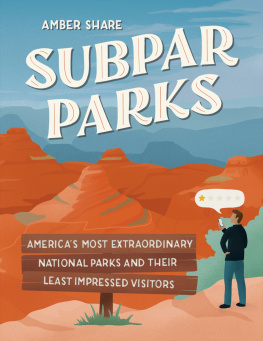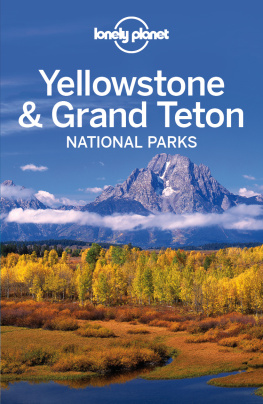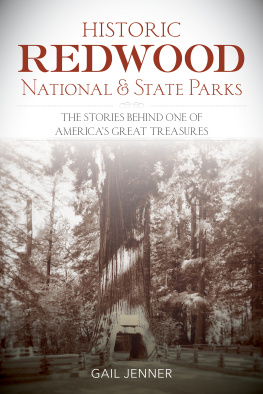INTRODUCTION
"Yessir," the traveler drawled, "Away out there in the petrified forest everythinggoes on the same as usual. The petrified birds sit in their petrified nests and hatchtheir petrified young from petrified eggs."
Treasury of American Folklore
Among America's national parks, Petrified Forest has existed as something of an anomaly.Americans value their parks as scenic wonderlands, and places like Yellowstone,Yosemite, and the Grand Canyon set the standards for our definition of national parks.Monumental scenery, varied recreational opportunities, extensive campgrounds, andeven resort hotels like El Tovar and the Old Faithful Inn all contribute to shapingthe American vision of these national vacationlands. When the first Park ServiceDirector, Stephen Mather, described these great national parks as the country's"crown jewels," he chose a particularly appropriate phrase.
The country's first parks owed their existence, at least in part, to an enduringsense of cultural anxiety. Nineteenth-century Americans worried about the new nation'sseemingly meager artistic contributions in comparison to those of Europe. Particularlydistressing was the lack of remnants of a glorious past; the United States couldboast of no castles or cathedrals, no monuments of Western Civilization. "The shadowygrandeurs of the past," to use Washington Irving's often quoted phrase, were missingfrom the New World. For these cultural traditions Americans substituted monumentalscenery, particularly after the Civil War, as they became increasingly familiarwith the American West. The Yosemite Valley, the Sierra Redwoods, and Yellowstone'sgeysers and canyons, among other scenic wonders, became this country's emblems ofnational identity. The idea of national parks originated in response to this culturalanxiety, historian Alfred Runte has noted. From the beginning, Americans valuedtheir national parks largely for their scenic impact.
Such attributes as monumental scenery do not adequately describe Petrified Forest,which became a park only after a long tutelage as a national monument-a separatecategory of scientific, historical, and archaeological sites established by the1906 Antiquities Act. Its history has not always paralleled that of other parks.From its inception in 1906, it was large for a national monument (only a few othersembraced more acreage), and, because of its location only a few miles from the SantaFe Railroad's main line, it was easily accessible to travelers. Railroads often supportedthe establishment of national parks and hastened to serve them. Petrified Forestwas among the few monuments to enjoy the benefit of transcontinental rail service.Later, Route 66 would bring even more tourists, and their numbers would reach nearlya million annually by the 1980s.
The ancient stone trees, which towered over Triassic swamplands more than 200 millionyears ago, suffered at the hands of visitors; protecting them was the sole reasonfor establishing Petrified Forest National Monument in 1906. Though the responsibilitywas an important one, it was for a long time interpreted and executed very narrowly.Even as paleontologists and paleobotanists unearthed from the Triassic Chinle Formationaround Petrified Forest more and more remains of ancient plants and animals, Washingtonofficials retained a single-minded obsession with preventing vandalism and theftof petrified wood. Attempts to develop a thoughtful educational or interpretive frameworkfor this unique landscape were sporadic. Congress did not authorize the NationalPark Service until 1916, and even then the agency did not address interpretationsystematically for years. The exception was at Yosemite, where Joseph Grinnell ofthe University of California's Museum of Vertebrate Zoology pioneered such activitiesas early as 1914.
The need to educate visitors was particularly pronounced at scientific sites likePetrified Forest. These monuments, like archaeological and historical ones, embodyan essentially educational commitment that reflects the discoveries of field researchand the ingenuity of interpretive specialists. Nowadays we acknowledge that parkscomprise more than simple recreational sites. As Paul Tilden, editor of NationalParks Magazine, has observed, they also are "units of a national educational institutionwhich offers informal classes in the architecture and history of the earth." Similarly,geologist William Matthews describes parks as "outdoor geological laboratories" thatprovide visitors with an opportunity to see how natural processes have sculpted thelandscape.
Geologic processes shaped the magnificent scenery at Grand Canyon, Yosemite, Yellowstone,and other places, but visitors easily take the landscape for granted, never consideringthe physical forces that produced the spectacular terrain around them. People oftenoverlook interpretive programs and are fully content to take in the scenic vistas.For decades this simple truth operated to the detriment of Petrified Forest. Visitorsoften delighted in the subtle hues of the Painted Desert and enjoyed wandering amongthe giant petrified logs; but they really had no framework for understanding thephenomena they witnessed, nor did they perceive the role of national monuments amongthe country's reserves. Consequently, visitors too easily categorized PetrifiedForest as merely a curiosity or a collection of oddities.
Beginning in 1916, a number of national monuments-Lassen Peak, Grand Canyon, Bryce,Mukuntuweap(to become Zion), Mt. Olympus, and others-made a quick transition tonationalparks. All ofthem possessed obvious scenic attributes, and their originalestablishmentas monuments represented a temporary status along the way to theirelevationto parks. Petrified Forest did not then make the transition, even aftertheaddition of the Painted Desert in 1932 gave it a unique scenic dimension. Forseveraldecades, the reserve remained something ofa Park Service stepchild-scenic,larger,and more heavily visited than its sister monuments and some parks, but lackingthedramatic scenery that would make it park material.
As a result, for much of its history Petrified Forest existed on the administrativefringes of the Interior Department's responsibilities. Most of the national monumentsshared the same fate, but because of its size, the number of visitors, and the vulnerabilityof its scientific sites, Petrified Forest demanded more attention. Washington's focusinvariably was on the parks, and when civilian administrators proved inept, the ParkService resorted to the army-as in Yosemite and Yellowstone prior to World War I.For the monuments, though, Washington often relied on voluntary custodians, eventuallypaying them a nominal one dollar a month to prevent theft and vandalism.
The administrative history of Petrified Forest in the early twentieth century isa case study of the Interior Department's relationship with the national monumentsand the problems of relying on volunteers or very poorly paid custodians. Near PetrifiedForest the little railroad town of Adamana boasted the Forest Hotel as the gatewayto the reserve, and its owners typically took on the responsibilities of monumentcustodians. From the 1890s through the 1920s, Petrified Forest was a one-man operation-thedomain of whomever owned the Forest Hotel at the time. These custodians were expectedto patrol the various deposits of petrified logs, preventing theft and deterringvandalism. Often these men also repaired roads, built bridges, constructed rudimentaryshelters, and installed primitive water systems, all the while receiving little directionor compensation from officials in Washington. For custodians at Petrified Forest,it was usually Frank Pinkley, superintendent of the Southwestern National Monuments,who provided encouragement and instructions and often interceded on their behalfwith Park Service administrators in Washington. Pinkley was the only contact thatmany custodians ever had with the agency's administrative hierarchy until the 1930s.









